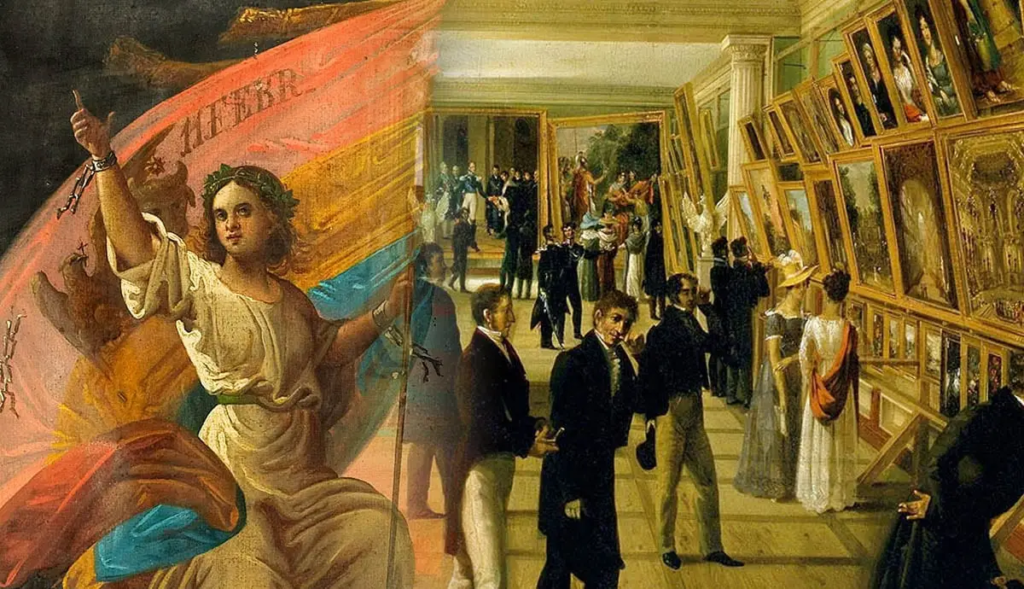
What is the Romantism period? Where? How?
- The Romantic period began roughly around 1798 and lasted until 1837 (Peaked during 19th century/Times can be negotiable). During this period the political and economic atmosphere was heavily influenced, many writers finding inspiration from the French Revolution. It was a movement in the arts and literature, it was characterised by emotion and by imagination and by individualism (constant poetry of emotions/subjective own opinion/not factual).
- Other focuses in the Romantism era was an emphasis on nature, freedom of form and the exploration of the Gothic and unknown.
- The main idea of Romanticism is that it is the celebration/the movement (of the 18th and 19th centuries) of the individual, idealisation of women as well the emphasis of emotion and glorification of the past and present (medieval over classical).
Linking French Revolution with the Romantisism period
- It had a significant impact on on the work of romantic poets, it inspired the themes of of liberty, equality and individuality in their poetry
- The Revolutions ideals of freedom and social change resonated with the romantic movement, making them lead to themes of and exploring nature, rebellion and passion in their work.
Social Change
During this change many things happened like:
- Calls for the abolition of slavery became louder and there was a lot more writing that was open about their objections.
- People moved away from the countryside and farmland and into the cities after the Agricultural Revolution.
- Where the Industrial Revolution provided jobs as well as technological innovations that after would spread onto the US in the 19th century, Romanticism was a reaction against this spread of industrialism.
- As well as the criticism of aristocratic and social norms (“ruling” social class) and a call for more attention to nature).


The Sublime

The sublime (from the Romantism era) in my opinion is the overwhelming feeling of awe mixed with terror in it’s most “fearsome”, as well as danger (Edmund Burke’s Philosophical Enquiry (1757)). Edmund saw “nature” as the “most sublime object, capable of generating the strongest sensations in its beholders”.
He was not the first philosopher to be intrigued and interested by the power/ complexity of the idea of the sublime but his account of it was very influential. Edmund broke the idea of the sublime down into seven aspects, all of which he argued were visible in the natural world and in natural phenomena:
Darkness – which constrains the sense of sight (primary among the five senses)
Obscurity – which confuses judgement
Privation (or deprivation) – since pain is more powerful than pleasure
Vastness – which is beyond comprehension
Magnificence – in the face of which we are in awe
Loudness – which overwhelms us
Suddenness – which shocks our sensibilities to the point of disablement
‘The sublime’ is many things: a judgement, a feeling, a state of mind and a kind of response to art or nature. By about 1700 an additional theme started developing, which was that sublime in writing, nature, art or in human conduct was regarded as of “such exalted status” that it was beyond normal experience, maybe even beyond the reach of understanding in human. As well as generally regarded as beyond comprehension and beyond measurement.
It has been long understood to mean “a quality of greatness or grandeur that inspires awe and wonder”.
Edmund thought that the ruling principle of the sublime was that “terror is in all cases whatsoever, either more openly or more hidden and not obvious in the moment”.
